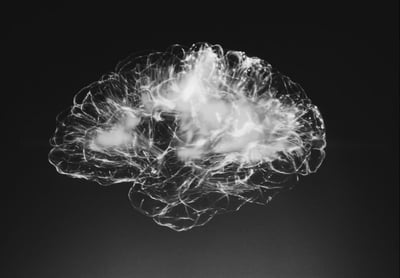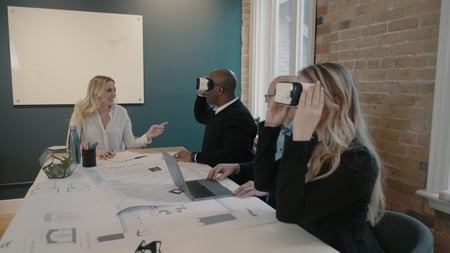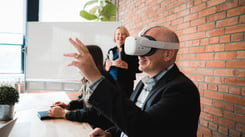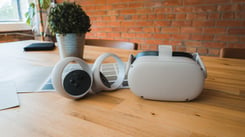Enterprise has shifted into an era of celebrating differences and diversity, constantly seeking ways to encourage inclusivity in the workplace. It’s no secret that the traditional workplace is starting to phase out as we become more technologically advanced with innovative design and greater consideration for inclusion.
But how exactly could VR be used as a tool to encourage inclusion?
Today, we’ll be looking at another example of how incorporating VR into the design process helps you identify any blind spots you may have in your workplace and foster inclusivity.
BBC Cymru Wales Broadcast Center
Recently, the team at BBC Workplace used VR in designing their newest broadcast center in Cardiff, Wales. Four years ago, the team was first introduced to the technology during the early stages of planning and designing the interior of the center. Teaming up with interior designer Sheppard Robson and inclusive design consultant Jean Hewitt, the BBC Workplace team used VR to gain a more robust understanding of how to make an office space more inclusive.
In one of their initial meetings with Jean Hewitt, the team was introduced to the term “neurodivergent”, also known as “neurodiversity”. In short, “neurodiversity refers to variations in the human brain regarding sociability, learning, attention, mood, and other mental functions” (retrieved from: https://bit.ly/2eC7MOj).

During that meeting, Hewitt used VR as a tool to show the team a simulation of how a neurodivergent person may experience a traditional office space. Once strapping on the VR headsets, the BBC Workplace team were shocked to see the effect their office could have on a person. Being able to experience it in VR was instrumental in prompting the team to explore different options in order to make their workspace a more inclusive environment.
Let’s explore how VR played a huge part in achieving two important objectives and how it ultimately resulted in change.
Fostering Empathy
Virtual Reality is a well-loved tool in organizations that focus on fostering empathy, as it disconnects the user from how they understand their reality and gives them the opportunity to step into another person’s world.
As the presenter, Jean Hewitt’s main goal was to communicate the challenges of a neurodivergent individual in a clear and effective way. However, one main barrier that comes with describing a neurodivergent individual’s challenges/perspective is the absence of the lived experience. Many subjects, including nuanced ones, can be understood at the academic and theoretical level, but it cannot come close to what it feels like to live through the experience.
“I did not expect my experience of looking through the headset to be so uncomfortable, illegible and anxiety-inducing: the lights seemed to flicker uncontrollably, the names of the meeting rooms and wayfinding were blurring,
and the patterned carpets seemed to be moving up and down. I only managed a couple of minutes before I had to take the headset off.”
Alan Bainbridge, Director of BBC Workplace
After the team’s VR experience, the BBC Workplace team immediately understood how jarring a traditional work environment can be. It didn’t matter whether the team members have had prior experience with neurodivergent individuals or not, VR allowed everyone to recognize the challenges by allowing them to experience it themselves. This led the team to take their vision for an inclusive space much more seriously.
Once a baseline of empathy has been established, it makes the designing process much quicker uniting visions with one common goal. With the simple step of immersing his clients in VR, Hewitt was able to present the given situation in a time efficient manner all while fostering a perfect understanding of the vision he wanted to communicate.
Creating a Perfect Understanding
Along with being able to foster empathy with your audience, VR allows the presenter to create a perfect and instantaneous understanding of the vision they are trying to showcase.
With the emergence of advanced visualization tools, the traditional way of sharing an idea or vision has become outdated. VR has become a great tool to present your ideas in a clear and efficient manner.
In this case, it can be difficult to adequately communicate why flickering lights and certain patterns or textures can be distracting or disturbing. It’s hard to picture the challenges that neurodivergent individuals may face unless you have had direct experience with it. From Jean Hewitt’s perspective, just by using words to describe the experience wasn’t enough -- he had to show the audience why the changes are necessary.
VR both engages the audience and opens the line for a perfect understanding of a given situation. As the BBC Workplace team collectively had little to no exposure to neurodiversity, the first hurdle they had to overcome was recognizing the challenges the individuals face and why it’s important to make adjustments.

As a design consultant specializing in inclusivity, Jean Hewitt is familiar with the challenges that neurodivergent individuals face, however, his audience may have had little to zero exposure to them prior to their meeting. Using VR in corporate design can show your clients the exact design blind spots in their project and understanding the hindrances immediately. This established perfect understanding can now help both the interior designer and client to create a space with considering the challenges of a neurodivergent person.
The Result? Simple Switches
Utilizing VR in corporate design transformed the whole process of designing their new building space. Through encouraging empathy and a channel for perfect understanding, the BBC Workplace team was able to understand the lived experiences of neurodiverse individuals. Their VR experience allowed them to make the necessary changes for a more inclusive environment. Interestingly enough, it only took a few small changes that they would usually overlook in the common workspace.
One of the easiest switches they implemented were non-flickering LED lamps and drop in lighting level options. During the team’s initial meeting with Hewitt, the flickering lights were one of the sore spots they pointed out. Lighting is one of the many distractions that can cause a neurodivergent individual a lot of discomfort and anxiety. By making this simple switch, the BBC Workplace team reported it “evoke[s] a more comfortable and domestic feel” (Retrieved from: https://bit.ly/2Ye8SFd).
The beauty of viewing an idea or vision in VR is that whoever you may be presenting to would understand your message instantaneously. Perhaps if the team never viewed the neurodiverse VR experience, they may not have truly grasped how small changes could make all the difference. Whether you are trying to communicate a message that is simple to understand or highly nuanced, VR allows you to share your story with clarity.
If you’re interested in starting your first VR in design, click here to access our “How to Design in VR” Whitepaper for our full list of tips, tricks, and considerations when getting started. For more information on how VR can enhance your business workflow, sign up for our FREE 5-day email course.



.jpg?width=245&height=150&name=active-adult-beautiful-1799244%20(1).jpg)


